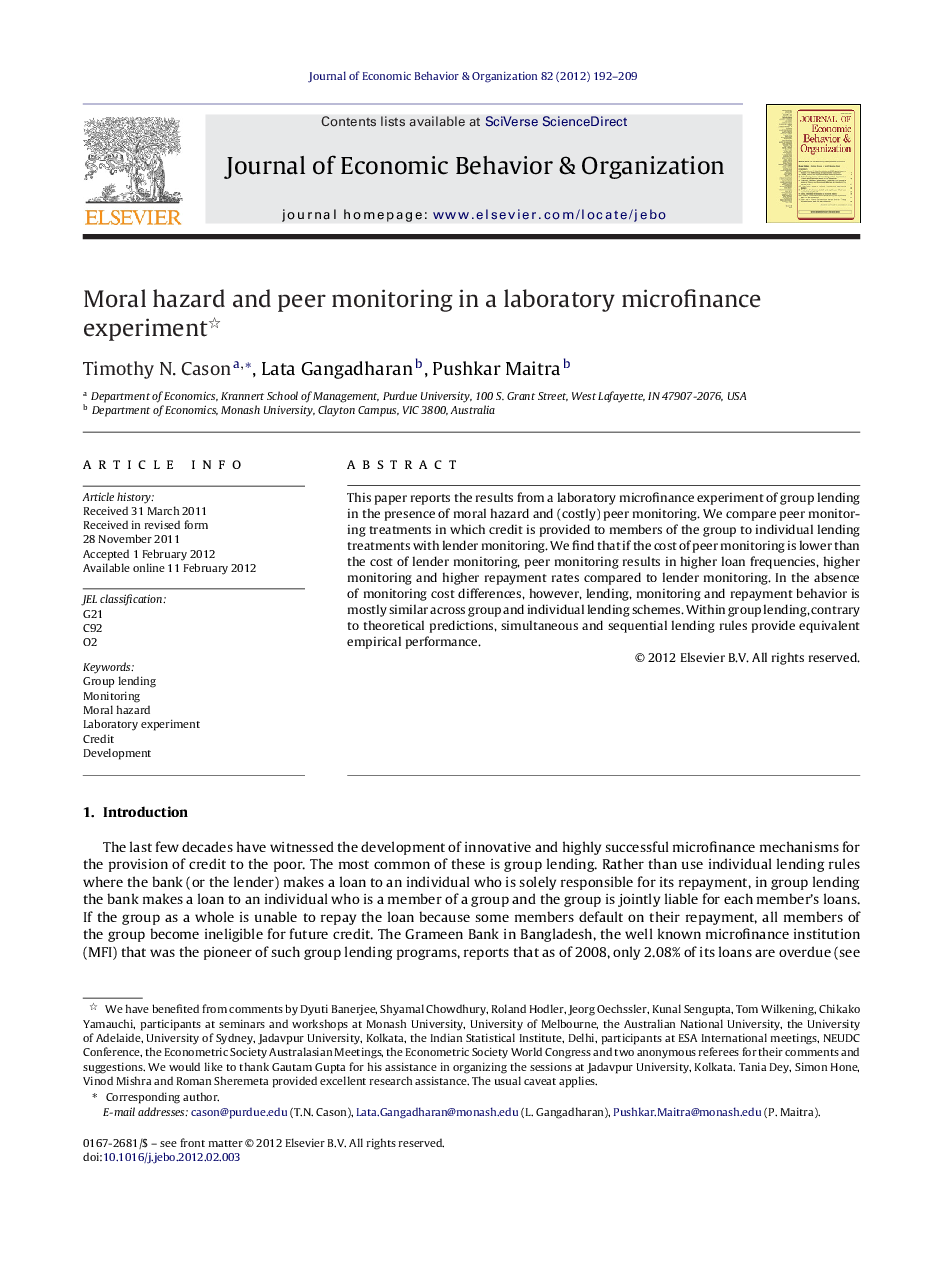| Article ID | Journal | Published Year | Pages | File Type |
|---|---|---|---|---|
| 883860 | Journal of Economic Behavior & Organization | 2012 | 18 Pages |
This paper reports the results from a laboratory microfinance experiment of group lending in the presence of moral hazard and (costly) peer monitoring. We compare peer monitoring treatments in which credit is provided to members of the group to individual lending treatments with lender monitoring. We find that if the cost of peer monitoring is lower than the cost of lender monitoring, peer monitoring results in higher loan frequencies, higher monitoring and higher repayment rates compared to lender monitoring. In the absence of monitoring cost differences, however, lending, monitoring and repayment behavior is mostly similar across group and individual lending schemes. Within group lending, contrary to theoretical predictions, simultaneous and sequential lending rules provide equivalent empirical performance.
► This microfinance experiment studies moral hazard and (costly) peer monitoring. ► It compares peer monitoring to individual lending treatments with lender monitoring. ► Peer monitoring results in greater efficiency compared to lender monitoring. ► Similar monitoring costs lead to similar outcomes in group and individual lending. ► Simultaneous and sequential lending rules provide equivalent empirical performance.
